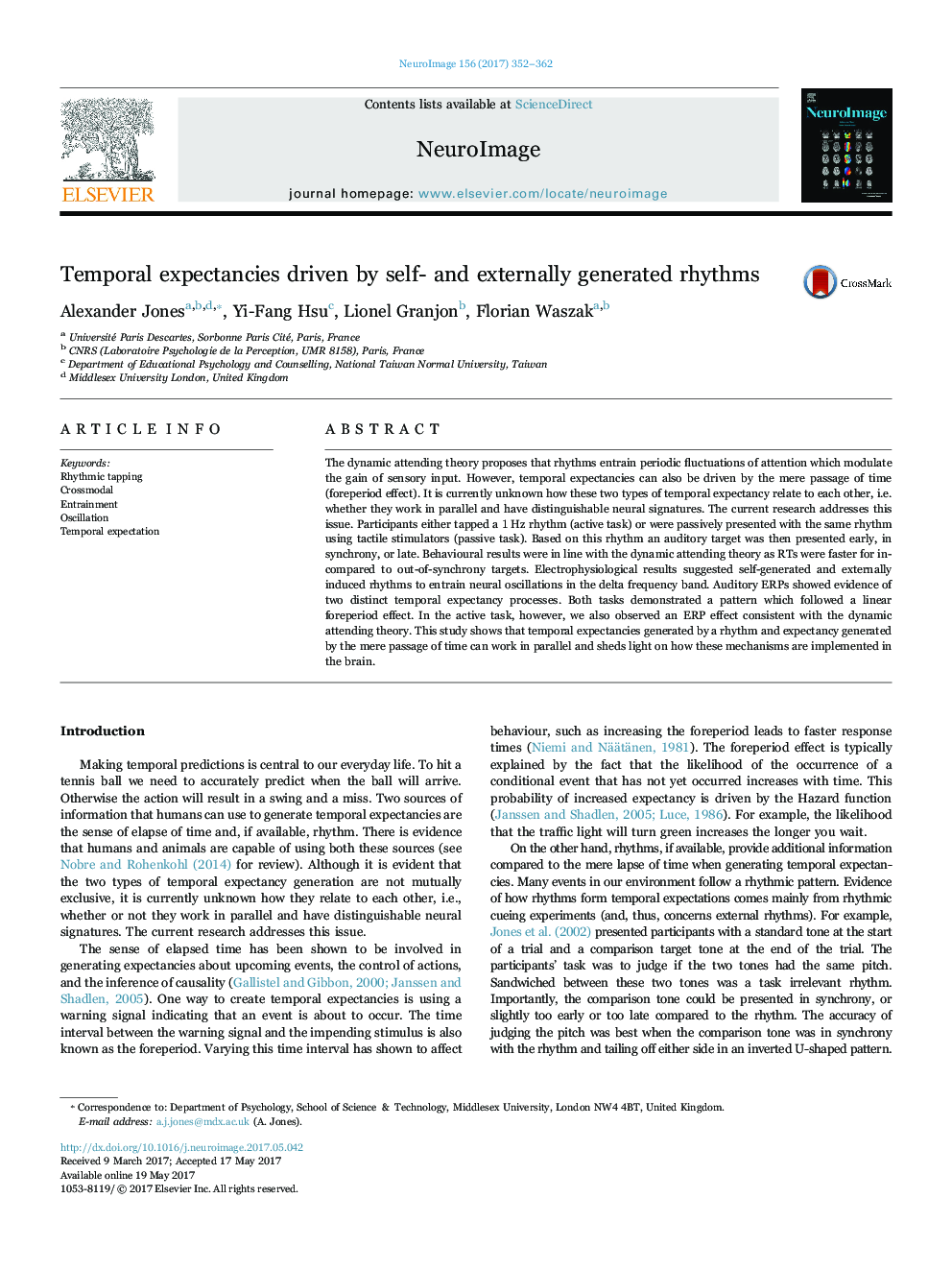| Article ID | Journal | Published Year | Pages | File Type |
|---|---|---|---|---|
| 5631033 | NeuroImage | 2017 | 11 Pages |
â¢Temporal expectancies can be driven by rhythms or by the mere passage of time.â¢We conceived a paradigm using EEG that tests for both these forms of expectancy.â¢We compared self-generated and externally generated rhythms.â¢We found evidence for both expectancy processes working in parallel.
The dynamic attending theory proposes that rhythms entrain periodic fluctuations of attention which modulate the gain of sensory input. However, temporal expectancies can also be driven by the mere passage of time (foreperiod effect). It is currently unknown how these two types of temporal expectancy relate to each other, i.e. whether they work in parallel and have distinguishable neural signatures. The current research addresses this issue. Participants either tapped a 1Â Hz rhythm (active task) or were passively presented with the same rhythm using tactile stimulators (passive task). Based on this rhythm an auditory target was then presented early, in synchrony, or late. Behavioural results were in line with the dynamic attending theory as RTs were faster for in- compared to out-of-synchrony targets. Electrophysiological results suggested self-generated and externally induced rhythms to entrain neural oscillations in the delta frequency band. Auditory ERPs showed evidence of two distinct temporal expectancy processes. Both tasks demonstrated a pattern which followed a linear foreperiod effect. In the active task, however, we also observed an ERP effect consistent with the dynamic attending theory. This study shows that temporal expectancies generated by a rhythm and expectancy generated by the mere passage of time can work in parallel and sheds light on how these mechanisms are implemented in the brain.
